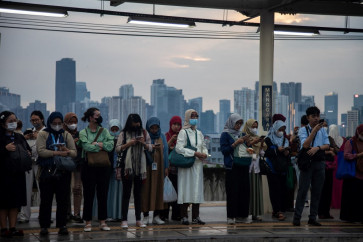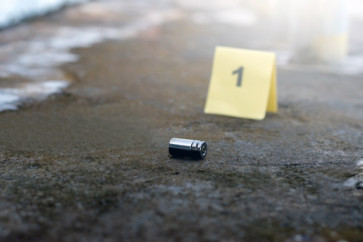Popular Reads
Top Results
Can't find what you're looking for?
View all search resultsPopular Reads
Top Results
Can't find what you're looking for?
View all search resultsNew book looks into 'songket' & weaving traditions
What is a songket? How is it made? What are other Indonesian traditional fabrics that use similar weaving techniques?A newly launched book â titled Floating Threads: Indonesian Songket and Other Weaving Traditions â tries to answer these questions
Change text size
Gift Premium Articles
to Anyone
What is a songket? How is it made? What are other Indonesian traditional fabrics that use similar weaving techniques?
A newly launched book ' titled Floating Threads: Indonesian Songket and Other Weaving Traditions ' tries to answer these questions.
The book is written by Judi Achjadi, a Canadian who came to Indonesia in 1958 and later became an Indonesian citizen.
The 300-page book looks into songket in an attempt to catalog float weaving techniques used to decorate cloth throughout the archipelago and hints at possible lines of distribution.
For around half a century, the 80-year-old was drawn into little, time-consuming details on textiles, which are hardly noticed by most buyers.
'A tiny supplementary weft-wrapped motif in a corner of a narrow ribbon of supplementary warp is what catches my eye and, to me, gives character to a piece of cloth,' said Judi, a wife of an Indonesian diplomat.
Supplementary weft-wrapping and supplementary warp are weaving techniques for applying motifs to cloth while the cloth is being woven by passing or 'floating' extra wefts (or warps) over or under several warps (or wefts) at a time.
In an effort to unravel reasons why certain techniques are or have been practiced in isolated faraway places, Judi has chosen to follow ancient trade routes through the archipelago, for it appears that some of these techniques spread along these paths.
In the first chapter, the book focuses on the clothes of tradition in the Southern Trade Route -- from Aceh to Timor, while in its second chapter it tells about the clothes in the Northern Trade Route ' from Kalimantan to Papua.

In its introduction, the book starts with a basic question: What are songket and float weaves? The book then explains that the word 'songket' means a sumptuous cloth interwoven with gold ' sometimes silver ' thread. However, it is a Malay term not found in languages spoken by some Indonesian people who use the same technique, but not with gold or silver threads.
The songket technique itself involves the insertion of decorative threads in between the wefts as they are woven into the warp, which is fixed to the loom. They are inserted as part of the weaving process, but not necessary in the making of the cloth.
If they were to be pulled out of the weaving, there would still be a piece of woven cloth. The technique is therefore described as supplementary (additional or extra) weft weaving. In some cases, the result can resemble embroidery.
The book also discloses various words being used to refer to the supplementary weft weaving technique in local vernaculars, some of which are derived from the Malay songket.
For example, it is known as songke in Manggarai, Flores, and Bima, Sumbawa, while it is known as songket in Bali and Java. The Karo Batak call it jongkit. People in Ternate, Maluku, call it suje, while the Buginese in South Sulawesi call it subbi' and arekare' and the Iban Dayak in West Kalimantan call it pilih or pileh.
The English term for cloth woven with supplementary wefts is 'brocade'. Since the decorative supplementary wefts may pass over or under several warps at a time, instead of over and under one at a time as is usual with plain weave, they are said to 'float'. It is these floating threads that create motifs on a foundation of plain weave.
Generally speaking, there are four types of supplementary weft weaving: continuous, discontinuous, inlaid and wrapped.
It has been suggested that the gold thread used in songket weaving was originally derived from solid gold sent from the South Sumatran kingdom of Sriwijaya, but no evidence has yet surfaced to support this.
The gold thread is not 'spun gold' -- but consists of a very long and narrow strip of gold-colored material wrapped around an inner core of silk, cotton or bast fiber and, today, synthetic fiber.
That 'strip' ' according to a study conducted for the Summerfields' 1990 publication Walk in Splendor and the author's own observation ' consists of several sorts, among them: paper with a gold-leafed (prada) upper surface, an extremely thin strip of gold or silver foil, or a thin metal strip of copper gilt being the most commonly found sorts.
The book also comes with colorful photos from start to end, allowing readers a closer look at the textiles.
'I've spent 50 years and more surrounded by Indonesian textiles,' Judi said. 'Batiks, weavings, bark-cloth, embroideries and traditional garments fill my life with a special kind of joy and have given me huge appreciation for the minds and skills of the makers.'
JP/Niken Prathivi












